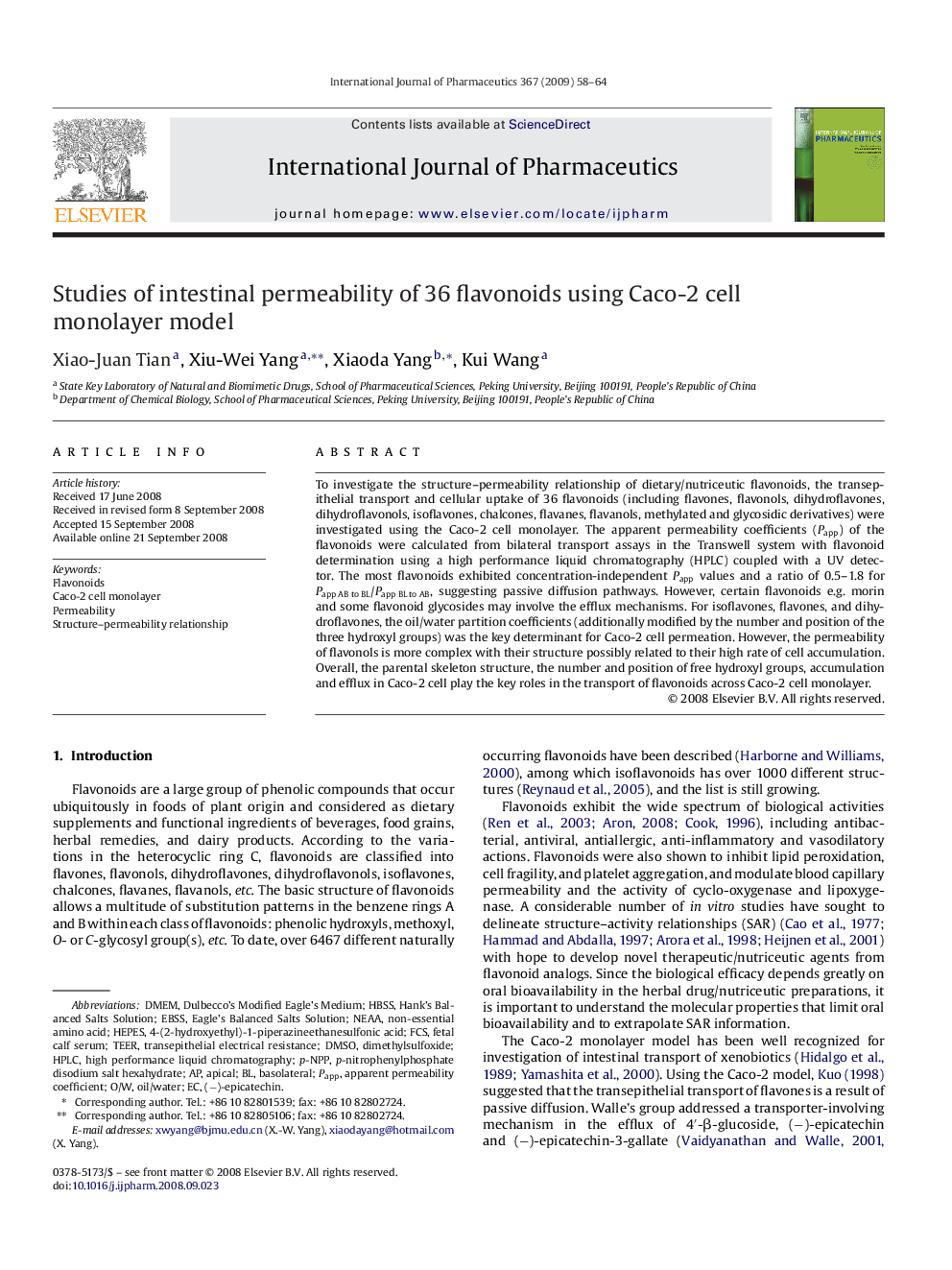| Article ID | Journal | Published Year | Pages | File Type |
|---|---|---|---|---|
| 2505008 | International Journal of Pharmaceutics | 2009 | 7 Pages |
To investigate the structure–permeability relationship of dietary/nutriceutic flavonoids, the transepithelial transport and cellular uptake of 36 flavonoids (including flavones, flavonols, dihydroflavones, dihydroflavonols, isoflavones, chalcones, flavanes, flavanols, methylated and glycosidic derivatives) were investigated using the Caco-2 cell monolayer. The apparent permeability coefficients (Papp) of the flavonoids were calculated from bilateral transport assays in the Transwell system with flavonoid determination using a high performance liquid chromatography (HPLC) coupled with a UV detector. The most flavonoids exhibited concentration-independent Papp values and a ratio of 0.5–1.8 for Papp AB to BL/Papp BL to AB, suggesting passive diffusion pathways. However, certain flavonoids e.g. morin and some flavonoid glycosides may involve the efflux mechanisms. For isoflavones, flavones, and dihydroflavones, the oil/water partition coefficients (additionally modified by the number and position of the three hydroxyl groups) was the key determinant for Caco-2 cell permeation. However, the permeability of flavonols is more complex with their structure possibly related to their high rate of cell accumulation. Overall, the parental skeleton structure, the number and position of free hydroxyl groups, accumulation and efflux in Caco-2 cell play the key roles in the transport of flavonoids across Caco-2 cell monolayer.
